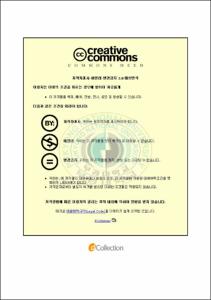다시마로 부터 정미성분 추출에 관한 연구
- Alternative Title
- Studies on the Extraction of Seasoning Compounds from Laminaria japonica
- Abstract
- Active ingredients of kelp were extracted effectively, and meanwhile, the returns-ratio of solid component as the taste compound in kelp and the methods of taste improvement were studied.
When 5 mesh was used during the hot water extracting. The solid concentration of kelp particle was in the vicinity of 4.2%. when the extracting condition the ratio of water to sample is 5 to 1, extracting temperature 60→, extracting time: 2h―were adopted, the final solid concentration was 5.2%. when 70% ethyl alcohol was used in the extracting process, the final solid concentration was 21.3%, when the ratio of 70% ethyl alcohol to sample is 6 to 1, the final solid concentration was 21.6% , and when the above extracting process operated at 30→, the final solid concentration was 21.8%. Ultimately, extracting time 60min was decided. when the mixed extract solution E (hot water : 70% ethyl alcohol=20% : 80%) was introduced into the extracting process, the results of functional assessment including taste, flavor and color were very good. The taste of kelp extract extracted by mixed solution A (hot water : 70% ethyl alcohol= 95% : 5%) and B (hot water : 70% ethyl alcohol=80% : 20%) were relatively good, and meanwhile, the solid concentration of kelp extract extracted by mixed solution B(hot water : 70% ethyl alcohol=80%: 20%) was considerably high. Components analysis results: moisture content 8.7%, crude protein 5.3%, crude fat 4.63%, ash content 1.31%, pH5.6, salt content 7.2%, sugar 9.0%. The contents of total nitrogen, amino nitrogen and nucleic acid in the mixed solution E(20%+80%) are 390.1mg/%, 189.1mg/%, 294.5mg/%, respectively. By comparison, the contents in hot water extract solution were relatively low. And gradually, the contents of total nitrogen, amino nitrogen and nucleic acid in 70% ethyl alcohol extract solution increased.
Component analysis of Extracts obtained by mixed solution B(80%+20%) was proceeded. Free amino content: L-arginine, L-glycine, L-alnnine. And mineral components: natrium 1.25÷0.03, potassium 3.17÷0.05, calcium 0.07÷0.00, magnesium 0.17÷0.00, iron 3.29÷0.08, copper 2.18÷0.25, silver 0.04÷0.00. Overall, the content increased in accordance with the order of iron, potassium, copper, natrium, magnesium, calcium, silver. Total 43 kind of volatile flavor component were detected. The major flavor component in the mixed solution were borane-methyl sulfide complex, methyiene choloride, 1-propanol, 3-methyl butanal, trichlor oethylene, toluene.
- Issued Date
- 2008
- Awarded Date
- 2008. 8
- Type
- Dissertation
- Publisher
- 부경대학교 산업대학원
- Alternative Author(s)
- Kim, Young-Ho
- Affiliation
- 부경대학교 산업대학원
- Department
- 산업대학원 식품산업공학과
- Advisor
- 양지영
- Table Of Contents
- 서론 = 1
재료 및 방법 = 5
1. 재료 = 5
2. 방법 = 5
2.1 다시마 추출액 제조 = 5
2.1.1 다시마를 이용한 열수 추출 = 5
2.1.2 다시마를 이용한 ethyl alcohol 에 의한 추출 = 6
2.1.3 열수추출과 ethyl alcohol 추출액 혼합 = 6
3. 일반성분 분석 = 6
4. 고형물 수율 분석 = 7
5. 아미노태질소 함량 분석 = 7
6. 핵산 함량 분석 = 8
7. 유리아미노산 함량 분석 = 8
8. 미네랄 성분 분석 = 9
9. 향기 성분 분석 = 9
10. 관능적 특성 분석 = 10
결과 및 고찰 = 11
1. 다시마 추출액의 일반성분 변화 = 11
2. 다시마 추출액의 고형물 수율 변화 = 14
2.1 열수 추출의 고형물 수율 변화 = 14
2.2 용매에 의한 추출 고형물 수율 변화 = 18
2.3 열수 추출과 용매에 의한 추출액 혼합 고형물 수율 = 26
3. 다시마 추출액의 정미 성분 변화 = 29
4. 다시마 추출액의 관능적 특성 변화 = 29
5. 다시마 추출액 총질소량, 아미노태질소, 핵산 함량 변화 = 32
6. 다시마 추출액의 유리아미노산 함량 변화 = 35
7. 다시마 추출액의 미네랄 성분 변화 = 35
8. 다시마 추출액의 향기 성분 변화 = 37
요약 = 42
참고문헌 = 44
- Degree
- Master
- Files in This Item:
-
-
Download
 다시마로 부터 정미성분 추출에 관한 연구.pdf
기타 데이터 / 776.95 kB / Adobe PDF
다시마로 부터 정미성분 추출에 관한 연구.pdf
기타 데이터 / 776.95 kB / Adobe PDF
-
Items in Repository are protected by copyright, with all rights reserved, unless otherwise indicated.